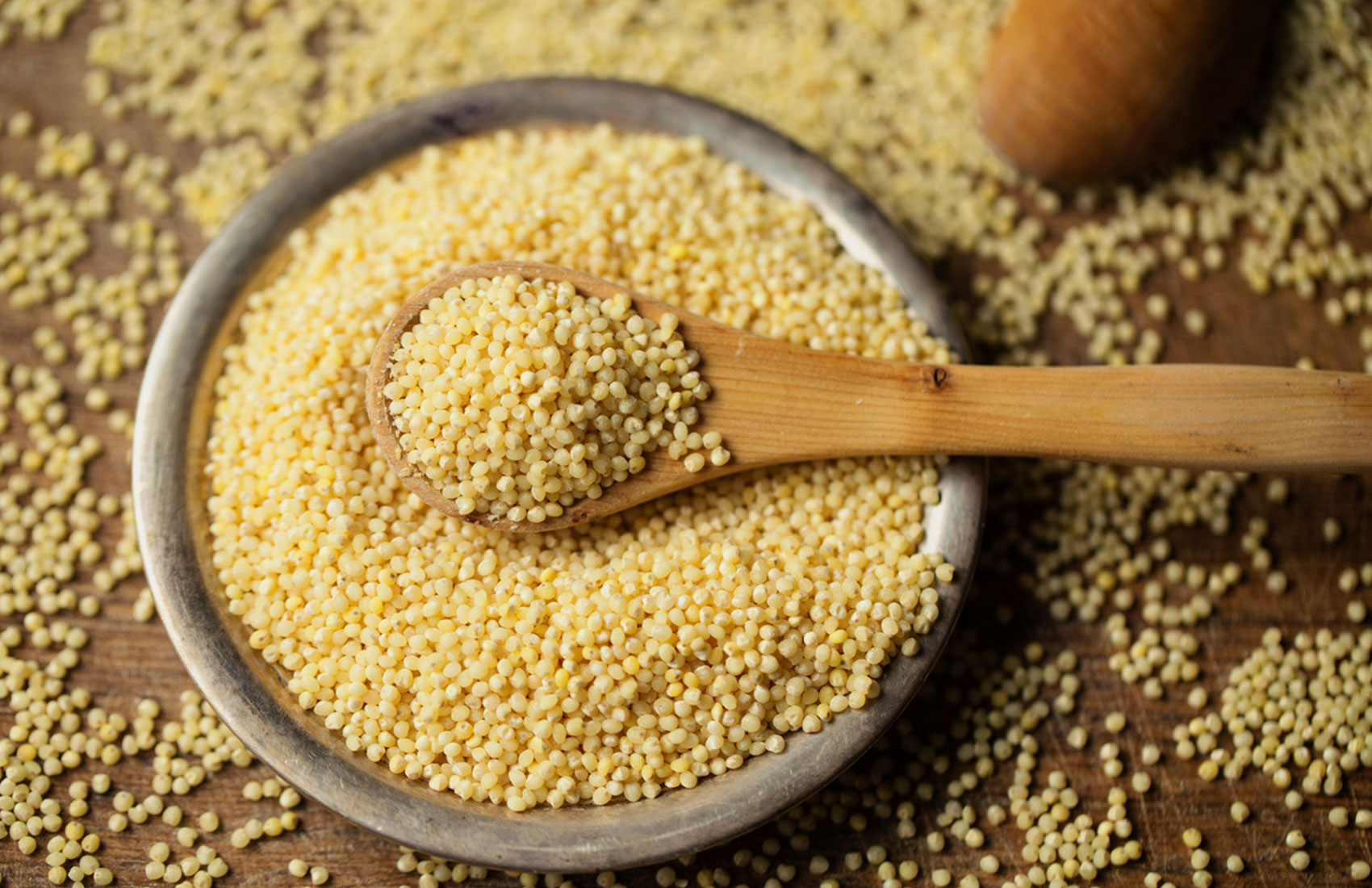Millet, an ancient grain, truly merits a place in our contemporary diets. Despite often being overshadowed by more popular grains like quinoa, oatmeal, or barley, this corn – like seed grain is brimming with nutrition, particularly an impressive amount of fiber.
Although millet is technically a seed, its characteristics closely resemble those of a whole grain. If you’re growing weary of consuming brown rice and oatmeal daily, adding this ancient grain to your diet can introduce much – needed variety. Read on to discover why millet is an excellent addition to your meals.
What Exactly is Millet?
According to registered dietitian Sarah Jackson, M.S., RDN, CLT, of Origin Nutrition, millet belongs to the Poaceae family of cereal grasses. While it’s commonly found in bird food, it’s also a highly nutritious option for human consumption. In fact, numerous countries around the world consider millet a dietary staple.
Nutritionist and mindbodygreen Functional Nutrition Training instructor Serena Poon, C.N., CHC, CHN, states that most of the millet available in grocery stores today is grown in India, China, and Niger. It’s also cultivated in North and South Dakota, Colorado, and Nebraska.
This naturally gluten – free grain resembles a corn kernel in appearance. It has a relatively mild flavor with subtle hints of a sweet, corn – like taste. In terms of texture, it has the fluffiness of couscous and is slightly denser than quinoa. Since it doesn’t overpower the flavors in most recipes, millet is extremely versatile and can be easily incorporated into a wide range of dishes. Moreover, if you’re seeking budget – friendly options for your meal plan, millet is one of the more affordable grains, as we’ll explore further below.
Nutritional Benefits of Millet
Similar to other whole grains, millet offers a plethora of nutritional advantages. A single cup of cooked millet contains 6 grams of protein and 2 grams of fiber. It’s also a good source of folate, B vitamins, and essential minerals such as magnesium, phosphorus, calcium, and iron, as Jackson explains. The combination of fiber and protein promotes healthy digestion. The insoluble fiber in millet acts as a prebiotic, nourishing the beneficial bacteria in the gut microbiome, according to Jackson.
A recent review published in Frontiers in Nutrition uncovered a connection between millet consumption and higher levels of hemoglobin, the iron – rich protein responsible for transporting oxygen throughout the body. The researchers found that regular intake of millet may help reduce iron – deficiency anemia, which accounts for 50% of anemia cases globally.
Compared to other grains, millet has a relatively low glycemic index. Past research has even suggested that it can be beneficial for maintaining healthy blood sugar levels.
Millet also offers environmental benefits. It is known for having a low carbon footprint because it requires minimal water and thrives in high – temperature conditions.
Millet vs. Quinoa
“The primary differences between quinoa and millet lie in their amino acid profiles and pH levels,” Jackson notes. “Quinoa contains all nine essential amino acids, making it a complete protein, whereas millet needs to be combined with another grain or seed, such as chia or flaxseed, to achieve complete protein status.” Regarding the pH of these grains, Jackson points out that quinoa is acidic, while millet is alkaline. Therefore, if you have a sensitive stomach, millet may be a better choice than quinoa as it is easier to digest.
Despite these differences, millet and quinoa share many similarities. Both are naturally gluten – free and classified as whole grains. Additionally, since they both possess prebiotic properties, they are excellent for supporting a healthy gut.
How to Cook Millet
Now that we understand why millet is a valuable addition to a healthy diet, let’s discuss how to use it. In reality, there are few limitations to incorporating millet into your cooking. This grain is as versatile as quinoa or rice and serves as an excellent source of healthy carbohydrates, rounding out any meal.
Using Millet Flour
While millet flour cannot be used as a direct substitute for all – purpose flour in every recipe, it can significantly enhance the fiber and protein content of dishes. Jackson suggests grinding millet to create a nutritious, gluten – free flour that can be used to make your favorite breads and baked goods.
Millet Recipes
If you prefer to prepare millet on its own, boiling is the recommended method. “The typical ratio of liquid to millet is 2:1 cups,” Jackson advises. “When cooked and fully hydrated, millet can triple in size and develop a soft, fluffy texture.” Once cooked, you can add it to your favorite salads, such as the Beet, Apple, and Raspberry Salad With Herb Millet, or include it in soups, chilis. It also makes a great side dish, as in the easy Vegan Millet Pilaf. For a delicious meatless option, try the Protein – Packed Millet Burgers, which are perfect for grilling or cooking in a skillet for your next Meatless Monday dinner.
Conclusion
Millet is an outstanding staple for almost any diet. It’s rich in protein and fiber, making it suitable for gluten – free and diabetic diets. Its remarkable versatility allows it to be seamlessly integrated into breakfast, lunch, or dinner, enhancing both the nutritional value and flavor of your meals.
